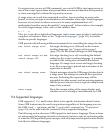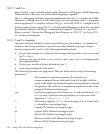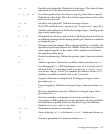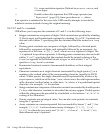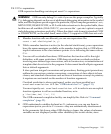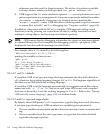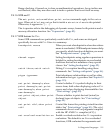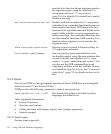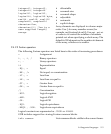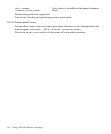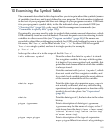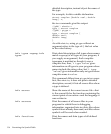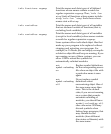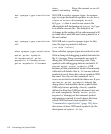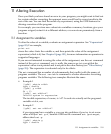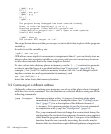integer*1, integer*2,
integer*4, integer*8
• allocatable
• assumed-size
logical*1, logical*2,
• assumed-shape
logical*4, logical*8 byte,
• adjustable
real*4, real*8, real*16
• automatic
complex*8, complex*16
• explicit-shape
character*len,
Array elements are displayed in column-major
order. Use () for array member access (for
character*(*) [len is a
user supplied length]
arrays
example, arr(i) instead of arr[i]). Use set print
elements to control the number of elements
printed out when specifying a whole array. The
default is 200 elements or the number of elements
of the array, whichever is smaller.
9.4.2.2 Fortran operators
The following Fortran operators are listed here in the order of increasing precedence:
=
Assignment
*, -, *, /
Binary operators
+, -
Unary operators
**
Exponentiation
.EQ., =
Equal
.NE., /=
Not equal, or concatenation
.LT., <
Less than
.LE., <=
Less than or equal to
.GT., >
Greater than
.GE., >=
Greater than or equal to
//
Concatenation
.NOT.
Logical negation
.AND.
Logical AND
.OR.
Logical OR
.EQV.
Logical equivalence
.NEQV., .XOR.
Logical non-equivalence
Logical constants are represented as .TRUE. or .FALSE.
GDB includes support for viewing Fortran common blocks.
info common
Lists common blocks visible in the current frame.
9.4 Supported languages 113



